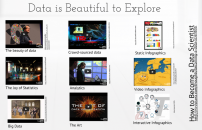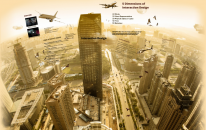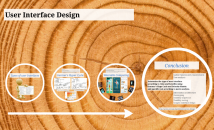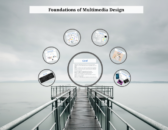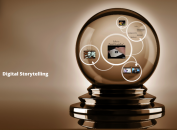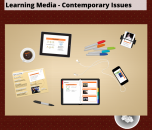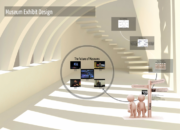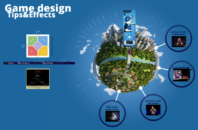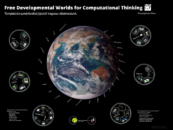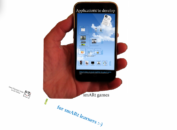Chapters
Scope
Definitions
Museum purposes change from institution to institution. Generally speaking, museums collect objects of significance that comply with their mission statement for conservation and display. Although most museums do not allow physical contact with the associated artifacts, there are some that are interactive and encourage a more hands-on approach. Rather than allowing visitors to handle vulnerable authentic objects, the museum often creates replicas to touch.
Museum creation begins with a museum plan, created through a museum planning process. The process involves identifying the museum’s vision and the resources, organization and experiences needed to realize this vision. A feasibility study, analysis of comparable facilities, and an interpretive plan are all developed as part of the museum planning process.
The exhibit design process builds on the interpretive plan for an exhibit, determining the most effective, engaging and appropriate methods of communicating a message or telling a story.
Types of museums vary, from large institutions, covering many of the categories below, to very small institutions focusing on a specific subject, location, or a notable person. Categories include: fine arts, applied arts, craft, archaeology, anthropology and ethnology, biography, history, cultural history, science,technology, children’s museums, natural history, botanical and zoological gardens. Within these categories many museums specialize further, e.g. museums of modern art, folk art, local history, military history,aviation history, philately, agriculture or geology. Another type of museum is an encyclopedic museum. Commonly referred to as a universal museum, encyclopedic museums have collections representative of the world and typically include art, science, history, and cultural history.
Interpretive planning is an initial step in the planning and design process for informal learning-based institutions like museums, zoos, science centers, nature centers, botanical gardens, heritage sites, parks and other cultural facilities where interpretation is used to communicate messages, stories, information and experiences. It combines developing, organizing and analyzing content into relevant and engaging messages, with creating exciting ways for visitors to experience this content. An interpretive plan establishes the communication process, through which meanings and relationships of the cultural and natural world, past and present, are revealed to a visitor through experiences with objects, artifacts, landscapes, sites, exhibits and people.
Exhibit design is the process of developing an exhibit—from a concept through to a physical, three-dimensional exhibition. It is a continually evolving field, drawing on innovative, creative and practical solutions to the challenge of developing communicative environments that ‘tell a story’ in a three-dimensional space. Exhibit design is a collaborative process, integrating the disciplines of architecture, landscape architecture, graphic design, audiovisual engineering,digital media, lighting, interior design and content development to develop an audience experience that interprets information, involves and engages a user and influences their understanding of a subject
A virtual museum is a museum that exists only online. A virtual museum is also known as an online museum, electronic museum, hypermuseum,digital museum, cybermuseum or Web museum.The term used depends upon the backgrounds of the practitioners and researchers working in this field. As with a traditional museum, a virtual museum can be designed around specific objects (akin to an art museum, natural history museum, or archive), or can consist of new exhibitions created from scratch (akin to the exhibitions at science museums). Moreover, a virtual museum can refer to the mobile or World Wide Web offerings of traditional museums (e.g., displaying digital representations of its collections or exhibits); or can be born digital content such as Net art, Virtual Reality and Digital art.
Internet art (often referred to as net art) is a form of digital artwork distributed via the Internet. This form of art has circumvented the traditional dominance of the gallery and museum system, delivering aesthetic experiences via the Internet. In many cases, the viewer is drawn into some kind of interaction with the work of art. Artists working in this manner are sometimes referred to as net artists.
The term Internet art typically does not refer to art that has been simply digitized and uploaded to be viewable over the Internet, but refers to the Internet as a whole, not only to web-based works. Internet art overlaps with other computer-based art forms such as new media art, electronic art, software art, digital art, telematic art and generative art.
Digitizing is the representation of an object, image, sound, document or a signal (usually an analog signal) by a discrete set of its points or samples. The result is called digital representation or, more specifically, a digital image, for the object, and digital form, for the signal.
References: Definitions and links (unless otherwise indicated as “site” or “pdf”) are copied and edited from English Language Wikipedia as of 1st September 2013. Titles could be further explored through indicated links.
Research
Design issues
Case-studies
Dilicious: “museweb”
Zs. Ruttkay, M Turcsányi-Szabó, Musea in the Digital Age, InSEA Congress proceedings (DVD, Full papers of the Research Pre-Conference and the Main Congress): Kárpáti, A , Gaul, E Eds (2011): ART – SPACE – EDUCATION. Proceedings of the 33. INSEA World Congress, Budapest, 25-30th June 2011. Congress Book. Budapest: Hungarian Art Teachers’ Association, 2011
(see InSeaFinal.pdf)
Readings
Excellent examples:
Publish Exhibits virtually
Virtual Museums


